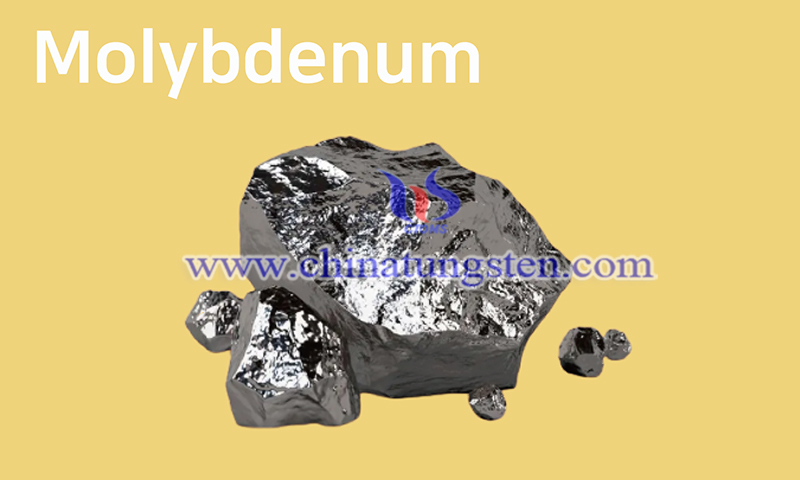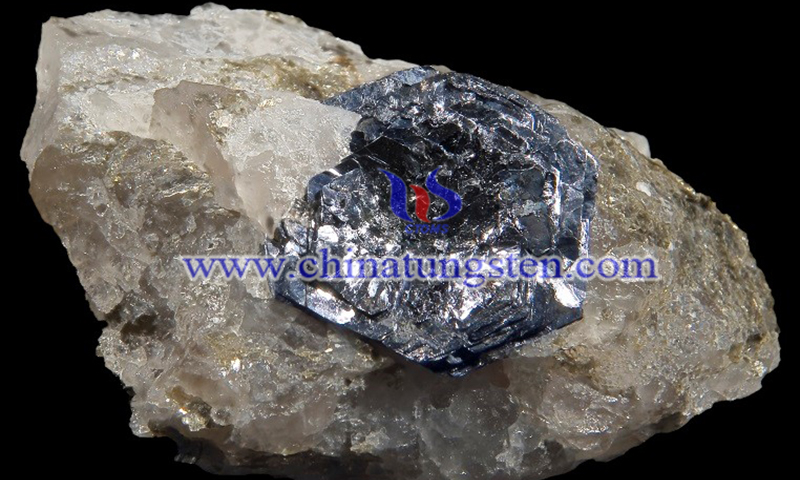7 Facts About Molybdenum
- Details
- Category: Tungsten Information
- Published on Tuesday, 15 March 2022 20:07
Molybdenum (Mo) is a silvery-white metal with the element symbol Mo, atomic number 42, density 10.2 g/cm³, melting point 2610°C, and boiling point 5560°C. In addition to the above basics, in this article, we’ll introduce 7 facts about Mo.
I. How was Mo discovered?
In 1778, Swedish chemist Carl Wilhelm Scheele discovered that nitric acid does not react with graphite, but with molybdenite, yielding a white powder that boils with an alkaline solution and crystallizes into a salt.

He believes that this white powder was a metal oxide, and when it was mixed with charcoal and heated, no metal was obtained. When it was heated with sulfur, the original pyromorphite was obtained, so he thought that pyromorphite should be a mineral of an unknown element. Inspired by Scherrer, in 1781 the Swede P. J. Hjelm used the "carbon reduction method" to isolate a new metal from this white powder, which he named "molybdenum".
Ⅱ. The reserves of Mo resources
The average content of Mo in the earth's crust is about 0.00011%. About 20 kinds of Mo ores have been found, among which pyromorphite has the highest industrial value, followed by tungsten-phase calcium ore, colored Mo-lead ore, and platinum-copper ore.
Molybdenum Ore
According to data released by the U.S. Geological Survey in 2015, global reserves of Mo resources are about 11 million tons, with proven reserves of about 19.4 million tons.
Ⅲ. The country distribution of Mo resources
According to data published by the U.S. Geological Survey in 2015, China is the world's richest country in terms of Mo resources, with reserves of 4.3 million tons, followed by the United States (2.7 million tons) and Chile (1.8 million tons). These three countries account for about 80 percent of the world's total Mo resource reserves.
Other countries with rich molybdenum resources include Peru (450,000 tons), Canada (260,000 tons), Russia (250,000 tons), Australia (200,000 tons), Mongolia (160,000 tons), Armenia (150,000 tons), Mexico (130,000 tons), Kazakhstan (130,000 tons), Kyrgyzstan (100,000 tons), Turkey (100,000 tons), Uzbekistan (60,000 tons) and Iran (50,000 tons).

IV. Global Mo production
According to data released by the U.S. Geological Survey in 2015, global Mo ore production in 2014 was 266,000 tons, up 3% from 258,000 tons in 2013. China is the largest producer of Mo ore. In 2014, 100,000 tons of Mo were produced, accounting for approximately 38% of the global total. in 2014, the United States ranked second with 65,500 tons of Mo ore production, while Chile (39,000 tons) and Peru (18,100 tons) ranked third and fourth, respectively.
In addition, other major Mo producers in the world include Mexico (11,000 tons), Canada (950,000 tons), Armenia (670,000 tons), Iran (630,000 tons), Russia (480,000 tons), Turkey (280,000 tons)), Mongolia (20,000 tons) and Uzbekistan (0.055 million tons).
Ⅴ. Application of Mo
Mo ranks first in the steel industry, accounting for about 80 percent of total Mo consumption, followed by the chemical industry, which accounts for about 10 percent. In addition, Mo is used in electrical and electronic technology, medicine, and agriculture, accounting for about 10 percent of total consumption.
Ⅵ. The reuse of Mo
With the continuous development of the Mo industry, the consumption of Mo raw materials is increasing, and there are fewer and fewer resources available for exploitation.
In order to protect the environment and improve the utilization of Mo resources, developed countries have started to pay attention to the value of Mo-containing spent catalysts since the mid-1980s. For example, 3,800 tons of Mo were recovered from spent catalysts in the U.S. in 1995, representing about 30 percent of the total Mo supply.
VII. Effects of Mo on human health
Mo is one of the essential trace elements that have a great impact on human health. The main effects of Mo on health include 1) Mo is an indispensable trace element in the formation of uric acid. 2) Mo is an important component of various enzymes, it is involved in the utilization of iron in the body, prevents anemia, promotes development, and helps in the metabolism of carbohydrates and fats. 3) Mo maintains the energy metabolism of the heart muscle and prevents Keshan disease.
4) Molybdenum maintains the elasticity of arteries and prevents cardiovascular disease. 5) Mo maintains the immune function of the body. 6) Mo regulates the thyroid gland. 7) Mo prevents dental caries, kidney stones, and cancer. 8) Mo is an important component of the iris.
| Molybdenum Supplier: Chinatungsten Online www.molybdenum.com.cn | Tel.: 86 592 5129696; Fax: 86 592 5129797;Email:sales@chinatungsten.com |
| Tungsten News & Prices, 3G Version: http://3g.chinatungsten.com | Molybdenum News & Molybdenum Price: http://news.molybdenum.com.cn |



 sales@chinatungsten.com
sales@chinatungsten.com